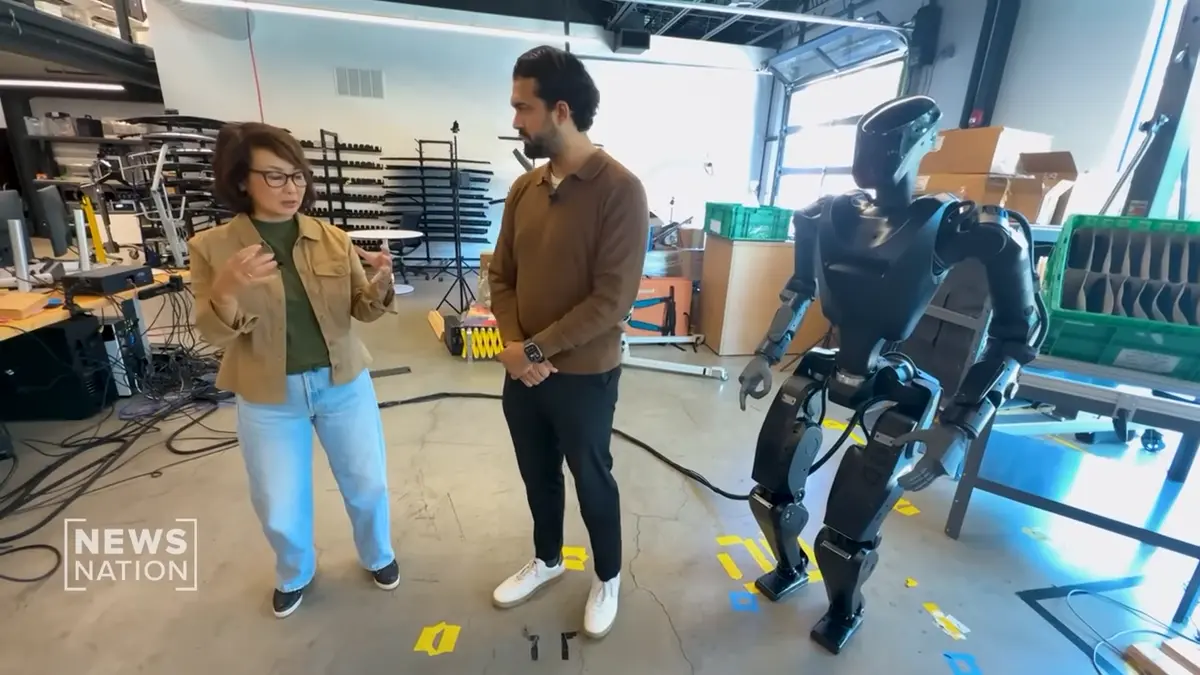- Published on
Foundation CEO Details Path to Armed Robots, Aims for 10,000-Unit Production in 2026
- Authors

- Name
- Humanoids daily
- @humanoidsdaily

In a new televised interview with NewsNation, Foundation Robotics CEO Sankaet Pathak offered his most detailed look yet at the company's "dual-use" strategy, describing the future of warfare as "real life video games" and laying out a clear "progression" for its Phantom humanoid robots on the battlefield.
While other U.S. humanoid robotics companies focus their public messaging on logistics and industrial automation, Pathak has been increasingly candid about defense applications. In the segment, he dismissed pledges from competitors to not weaponize their robots.
"Pretending that you don't need to weaponize robots... sounds virtuous on face value, but it really isn't," Pathak stated. He pointed to videos of a Chinese military parade featuring robots as evidence that the U.S. risks a "disproportionate loss of life" if it fails to pursue similar technology.
A "Natural Progression" to Armed Robots
Pathak outlined a multi-stage plan for military deployment. The initial use case, he explained, would be as "non-lethal humanoids in the battlefield as first bodies in," serving as "ground drones" for surveillance in environments like buildings or difficult terrain.
"Then the second version of that is going to be exactly what you're saying, mounting a weapon on it, um uh grenades, things like that," Pathak said. He also floated the idea of non-traditional, attached weapons, referencing the "Iron Man suit".
This rhetoric marks an escalation from a CNET feature earlier this month, where Pathak first confirmed that arming robots was "on the table".
Pathak did, however, stress the importance of human oversight, particularly for lethal actions. "You don't want these things to be fully autonomous," he said, adding that for the "foreseeable future," defense applications will require "human judgment in the loop". When asked how a robot would know "friend or foe," Pathak reiterated that a human operator would make the final call.
"Insane" Manufacturing Goals
Beyond military applications, Pathak detailed an exceptionally aggressive manufacturing roadmap. He stated Foundation aims to scale its first manufacturing facility to produce "one robot a day" by the end of this year, aspirationally starting in November.
Following that, the goal for 2026 is to manufacture "close to 10,000 robots". Pathak acknowledged the numbers sound "insane" and "exceptionally tough, but I think there's a chance where we can do it".
He framed this manufacturing push as a matter of national security, arguing that while U.S. and Chinese robotics R&D are "pretty neck to neck," the U.S. is "behind on manufacturing". "You have to really now in-house this manufacturing ability," he said.
Phantom 'Mach 2' in Development
The segment also provided an update on the 'Phantom' humanoid's development. The current "Mach 1" robot is set for "Mark 1.1" and "Mark 1.2" revisions within the next 30 to 45 days to improve "build quality and reliability".
In parallel, a second-generation "Mach 2" robot is in development for next year. Pathak said the new version is being targeted to lift "twice as much" and will be "much more easier to manufacture," moving to injection molding and reducing complex wire harnesses.
Foundation's unapologetic military focus, first detailed by co-founder and former Marine Mike LeBlanc (see our story: "'Don't Send a Marine, Send a Robot'", sets it apart in the burgeoning humanoid field. These ambitious production and defense goals come as the company is reportedly seeking a $100 million raise at a $1 billion valuation, all while navigating scrutiny over Pathak's leadership of his previous failed fintech venture, Synapse.